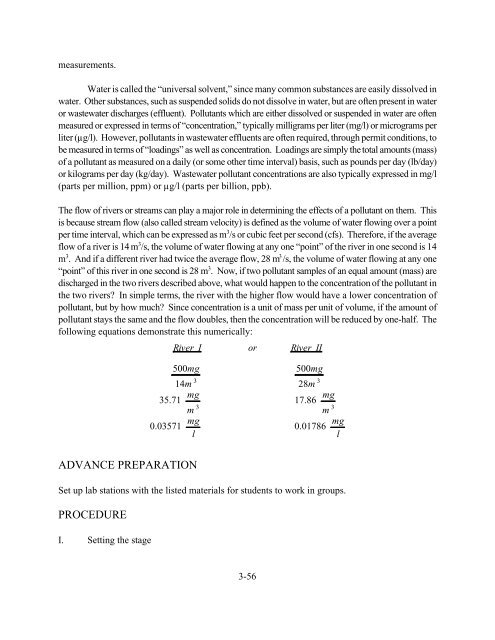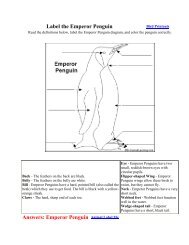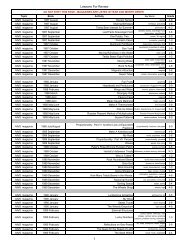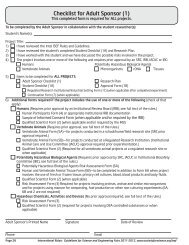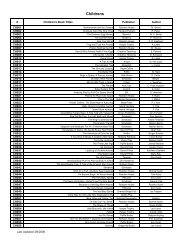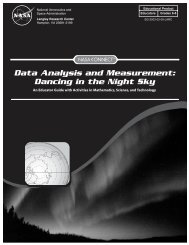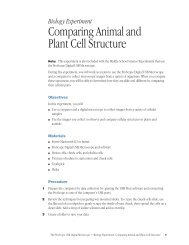BIOGRAPHY OF A RIVER
BIOGRAPHY OF A RIVER
BIOGRAPHY OF A RIVER
Create successful ePaper yourself
Turn your PDF publications into a flip-book with our unique Google optimized e-Paper software.
measurements.Water is called the “universal solvent,” since many common substances are easily dissolved inwater. Other substances, such as suspended solids do not dissolve in water, but are often present in wateror wastewater discharges (effluent). Pollutants which are either dissolved or suspended in water are oftenmeasured or expressed in terms of “concentration,” typically milligrams per liter (mg/l) or micrograms perliter (µg/l). However, pollutants in wastewater effluents are often required, through permit conditions, tobe measured in terms of “loadings” as well as concentration. Loadings are simply the total amounts (mass)of a pollutant as measured on a daily (or some other time interval) basis, such as pounds per day (lb/day)or kilograms per day (kg/day). Wastewater pollutant concentrations are also typically expressed in mg/l(parts per million, ppm) or µg/l (parts per billion, ppb).The flow of rivers or streams can play a major role in determining the effects of a pollutant on them. Thisis because stream flow (also called stream velocity) is defined as the volume of water flowing over a point3per time interval, which can be expressed as m /s or cubic feet per second (cfs). Therefore, if the average3flow of a river is 14 m /s, the volume of water flowing at any one “point” of the river in one second is 143 3m . And if a different river had twice the average flow, 28 m /s, the volume of water flowing at any one3“point” of this river in one second is 28 m . Now, if two pollutant samples of an equal amount (mass) aredischarged in the two rivers described above, what would happen to the concentration of the pollutant inthe two rivers? In simple terms, the river with the higher flow would have a lower concentration ofpollutant, but by how much? Since concentration is a unit of mass per unit of volume, if the amount ofpollutant stays the same and the flow doubles, then the concentration will be reduced by one-half. Thefollowing equations demonstrate this numerically:River I or River II500mg14m 335.71 mgm 30.03571 mgl500mg28m 317.86 mgm 30.01786 mglADVANCE PREPARATIONSet up lab stations with the listed materials for students to work in groups.PROCEDUREI. Setting the stage3-56


